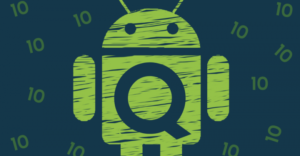Introducing Android Q
Pie is still on its way out to most of the world, but today we’re going one step further. Android Q’s first beta has officially launched! As Android’s developer blog puts it so perfectly: “…mobile innovation is stronger than ever, with new technologies from 5G to edge to edge displays and even foldable screens. Android is right at the center of this innovation cycle”.
The bug tracker for Q first opened on Monday, and since then we’ve all been waiting expectantly to see its release. Now that it’s here let’s take a look at some of the things it has to offer.
Privacy and Security:
Whenever we’re discussing privacy, one of the first things that comes to mind is location. We don’t all like the idea of being tracked everywhere we go by 3rdparties. Currently on Android no app is able to track your location unless you explicitly allow it. Q takes this to the next level by allowing users to grant location based on app usage. So if you want, no more being tracked when an app isn’t open. This could be useful for things such as food delivery apps that really have no business monitoring you during other parts of your day. 
Another improvement for user security that revolves around runtime permissions is access to files and media. The Photos and Videos and Audio collections will be featured in a new set of runtime permissions. And downloads must use the system file picker, allowing the user to decide which download files an app has access to. This is just another step to help silo information and enhance a user’s experience without having to give an app everything.
Innovative Screens and Experiences:
You’ve undoubtedly seen some of the new foldable phones that have been revealed recently. They look incredibly fun (unfortunately also incredibly expensive), but it should be no surprise that Q will be accounting for these. To help users make use of an unfolded device with lots of screen space, changes have been made to onResume and onPause to support multi-resume (we wrote about this in one of our Q hypothesis posts a while back).
 In addition, some changes have been made with sharing and setting to speed up a user’s navigation. The process of moving from one app to another to share content has been streamlined with Sharing Shortcuts. You can also show key system settings insideof your app using a new Settings Panel API. This uses the Slices feature from Pie and lets you present a modal to users where they can directly access things such as what Wi-Fi they are connected to. No more redirecting users into the Settings app to mess with things!
In addition, some changes have been made with sharing and setting to speed up a user’s navigation. The process of moving from one app to another to share content has been streamlined with Sharing Shortcuts. You can also show key system settings insideof your app using a new Settings Panel API. This uses the Slices feature from Pie and lets you present a modal to users where they can directly access things such as what Wi-Fi they are connected to. No more redirecting users into the Settings app to mess with things!
There are also changes to the camera, media, and graphics utilizing Dynamic Depth. Using Q users can request a Dynamic Depth image which consists of a JPEG, XMP metadata, and a depth and confidence map all embedded in the same file. The result of this is the possibility to offer specialized blurs and bokeh options in your app. Or if you want you can create 3D images/photograph things in AR much more accurately.
Getting Q On Your Phone:
As with many of Google’s recent technologies, you can get your hands on it first if you own a Pixel. Beta 1 is available all the way back to the original Pixel/Pixel XL. Click here to enroll in the Android Q Beta and start playing around with it. And if you don’t own a Pixel, you can always use the Android Emulator and download a system image via the SDK Manager.
There is a ton to explore for Android Q still since it’s just day 1. Let us know what you think about it in the comments below!


Hi sir,
i like your Post and I read each of your Post
https://knowthistech.com/android-q-beta-debuts-how-to-download-compatible-devices-new-features-and-more/
You have explained very well on android Q!! Thanks for sharing!!